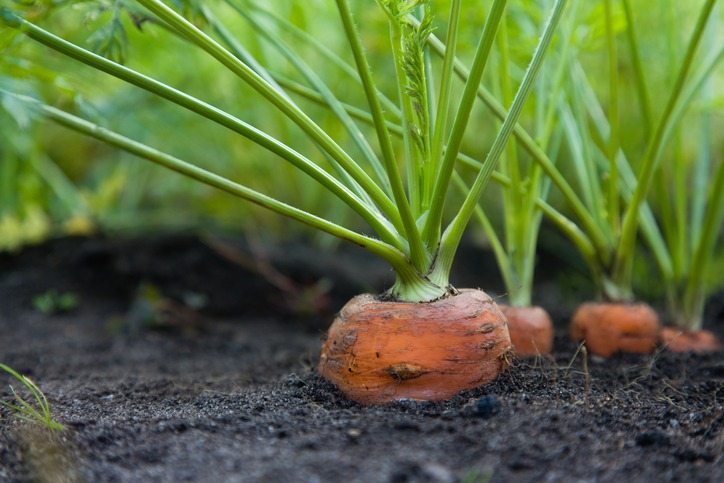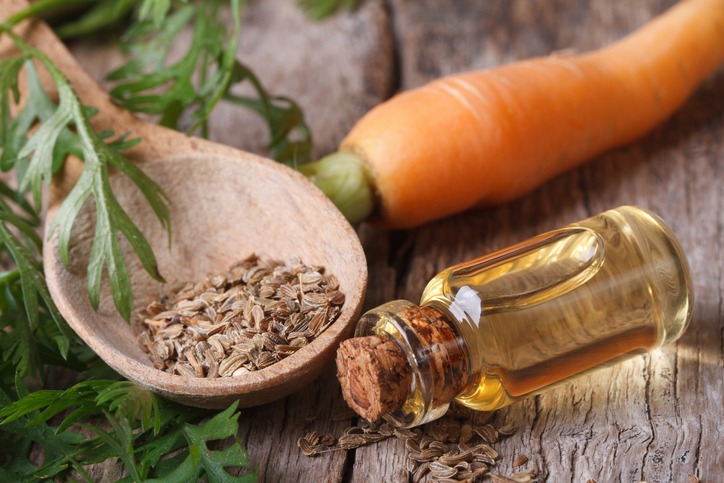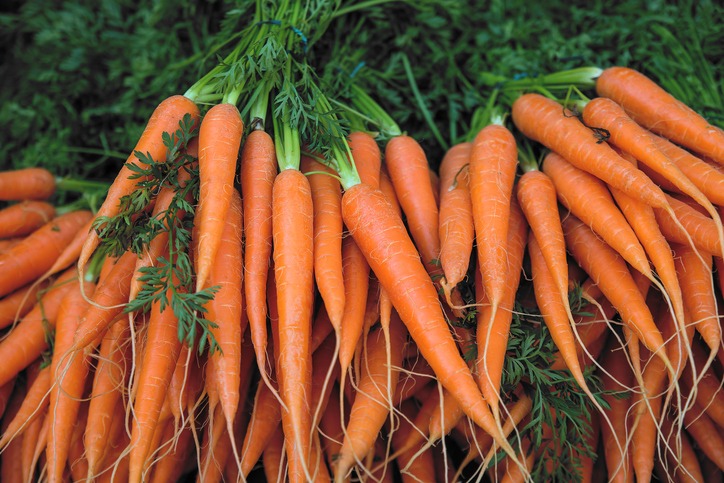Carrots are among the top vegetables gardeners and homesteaders want to include in their garden plants. It’s one of the most common crops in the world. As you already know, carrots are pretty much nutritious and versatile – they can be added to many different kinds of dishes, soups, and even cakes.
However, there are many times gardeners become dismayed and annoyed because carrots are a bit difficult to grow. Carrots are viewed as a “complicated vegetable” by some gardeners because they are prone to different issues. Problems with growing carrots are completely normal, and most of them can be prevented with a little bit of knowledge.
Here are some common problems that carrot growers face and learn how to avoid them:
All About Big Green and Small Green Carrots
So, you’re in your garden, and the leafy tops of your carrots are big, green, and gorgeous. You reach down to feel around the tops and discover that the carrots have large shoulders. But when you pull that carrot out with anticipation, you’re disappointed to see that the carrot is tiny. What happened?
The first thing to troubleshoot about is the soil. Carrots grow down, so the soil must be loose and not compacted. It must not be filled with hard clay and rocks.
If your soil isn’t compatible with encouraging carrot growth, plant your carrots in a raised bed or a large container. Unless you want to do a lot of sifting, you won’t get all of those rocks out. Using leftover wood chip mulch from a previous planting is great for weed control and water retention, but the rocks in the growing zone of the roots can be disastrous for young carrots. If you have compacted clay soil, loosen it up using a broad fork. It works great also in raised beds.
If the problem is not having rocky soil or a compacted clay, maybe it’s your fertilizer. Gardeners like to fertilize their plants to make their garden look green, lush, and pretty. The downside is not all plants need the same nutrients. It can have different impacts on your harvest that you may not notice until harvest time.
For carrots, do not use a fertilizer high in nitrogen because nitrogen makes for large tops. But what matters with carrots are roots, not the tops. So, get a fertilizer that is lower in nitrogen and higher in phosphorus because the latter helps the roots grow.
What to do when carrots have stunted growth?
Sometimes, carrots won’t grow at all, and you will be left with just little green tops. And when you try to harvest one to see what the problem is, you might find that you don’t have any root growth at all.
The main reason for this happening is because of the damage to the carrot tops. When the tops are damaged during the growing season, the plant directs its energy growing the tops instead of the carrots themselves. The tops of the carrots often face issues with frost, insects, and fungus, so you must determine the primary cause.
If you got the right fertilizer and you know your soil is loose and you still get small carrots with little tops, most likely, it’s an issue with sunlight. Carrots need very light shade to full sun to thrive. If you planted them in an area where they are not getting this, there’s a chance that you’ll have super small roots and tops.
Cater to Carrots With Too Many Sprouts
You might rejoice when you see that many seeds have sprouted, but it will cause problems as the carrots underneath grow. Sometimes, the carrots are too small because the gardener did not provide adequate spacing. If they are planted too close together, they will fight for nutrients to grow.
It usually happens because carrot seeds are so tiny, and anyone might have underestimated the space they need to grow well. Even long-time gardeners can get heavy-handed with the sowing of carrot seeds.
When too many seeds sprout, you have to do the most tedious part of growing carrots – thinning the sprouts. It means removing extra sprouts to ensure that the remaining carrot seedlings have 1-2 inches of space in which to grow. If you don’t do this, the carrots you will harvest will be drastically smaller and have short roots.
To remove extra seedlings and sprouts without disturbing the delicate root system of the sprout you want to keep, use micro-tip pruners and snip the sprouts. To avoid needing to thin your carrots, you can get them by pelleted seeds or seed tape to ensure proper seed spacing when you sow.
How to Cater to Carrots That Do Not Grow After Transplanting?

Many gardeners like to start their seeds early inside the home to transplant the seedlings to the outdoor garden once temperatures become suitable. While this method works for a lot of plants, it’s essential to know that carrot seeds like to be planted directly in the garden. They don’t like to be transplanted. Do not disturb the carrots once the seeds have germinated and are forming roots. So, make sure that you will only sow carrot seeds in the place where you want them to grow.
When carrots are transplanted, they won’t likely not sprout. Also, remember that carrots take up to three weeks to germinate.
The good news is carrots are hardy vegetables that can thrive even when temperatures are cooler than ideal. In addition, carrot seeds can germinate in a wide range of soil temperatures, so you don’t really need to take the extra work sprouting them in containers and transplanting them in the garden afterward. The key things to look out for are the seed depth and consistent moisture.
Are Your Carrot Seeds Not Germinating Properly? What to do next!

Carrot seeds are tiny, and many carrot growers unknowingly plant their carrots too deep. For most plants, seeds must be placed well beneath the surface of the soil, but that’s not the same with carrots. They don’t need to be placed deep into the ground because it decreases the germination rate of the plant.
Steps to take next:
Gently till the plant bed and sprinkle the seeds in their designated area. Then, gently cover the seeds with soil. Make sure that it’s only a light covering so they can sprout well.
After you sow your seeds, they must remain moist until germination, which lasts for up to 3 weeks. Water well, or better yet, moisten the soil before planting. Then, you have to cover the soil to keep them moist and prevent the sun from drying it up. To do this, use a flat, floating row cover. It helps keep the moisture in, allowing the sun to hit the sprouts, and you can still water directly on top of the cover without disturbing the sprouts.
Rotting Carrots & How to Deal With Them?
When you pick a carrot to harvest and find out that the plant is rotting, you have a serious problem to tackle. The main culprit behind rotting carrots is a disease called root rot. It happens to many different plants, which causes them to wilt, but when it happens to root vegetables like carrots, you are losing the main portion and most important part of the plant.
Root rot happens due to improper soil conditions. Choose soil that is loose and well-draining. So, when you are planning out your garden to grow carrots in, make sure that water will seep deep into the ground. If the water won’t drain away from the carrots, the crop becomes soggy and will eventually rot.
Soil is a top priority when choosing to grow carrots. Without the proper soil, carrots can rot or not grow at all.
What to do with Green Shoulder Carrots?
Some people have a problem with carrots having green shoulders upon harvest. It doesn’t look normal, and you know it will be hard to sell. Also, you may wonder if it’s safe to eat.
Having green shoulders on the carrots simply means the carrot crops were exposed to the sun. It shouldn’t harm your harvest, and it’s not toxic like with potatoes. When chopping them up, you can simply remove the green portions and go on with using them for your dish.
To avoid this in the future, check your plants if you can see carrots poking through. If you do, take a bit of soil and cover them as they grow. Always make sure that the soil is mounded around the top of the carrot to prevent them from turning green due to sun exposure.
All You Need to Know When Pests Invade Carrots?
Pests can eat off the carrot tops, and as mentioned earlier, this can cause stunted carrot growth. When the tops are damaged, the plant will redirect its energy to re-growing the tops and not the roots where the actual carrot lives.
One of the pests that target carrot plants is slugs. To get rid of them, you can simply hand-pick them off. This method will work if you only have a few carrot plants and if you have time to work on each plant. But if you have larger crops of carrots, leave out small saucers of beer into the ground to attract the slugs. Then, they can be easily disposed of.
Aphids are another type of pests that love carrot plants. They are harder to pick off and eliminate than slugs because they are smaller and can be fast-moving. However, you can get rid of them by blasting them off with your hose. Also, make sure to get in the little spaces where the stems and branches of the carrot tops meet because pests love to hide there.
However, the most effective way of getting rid of aphids is to use insecticides. It’s easier and less time-consuming.
Carrot rust fly is another pest infestation that you don’t want to have. You can see this as brown lesions on your edible carrot roots. These flies eat up the carrots because they are attracted to the smell of the plants. You can companion plant chives and garlic to help mask the carrot’s scent to repel the fly before it lays its eggs on the carrots. You can also add a floating row cover so that flies won’t land on the plant, to begin with.
Diseased Carrots & How to Deal With Them?
Even if you are not dealing with insects and pest infestations on your plants, you may still get frustrating issues regarding your carrots. These things can be caused by diseases, which can present themselves as yellowed leaves, browning leaves, moist black patches, and more. Diseased leaves generally droop down and make it obvious that they are not growing properly.
Alternaria black spot – also known as Alternaria leaf blight – is a disease caused by an Alternaria fungus that can cause the leaves to blacken and die. Signs include yellowing of leaves, moist black patches, and dying leaves. The disease spreads through water and soil. To prevent this from happening, don’t overwater the tops of your carrot plants. Instead, aim your watering can or hose at the roots to prevent fungal infections.
If it happens, remove the dead and dying leaves, then spread a fungicide in your garden. Make sure that the fungicide you choose is formulated for vegetable gardens and not just ornamental plants since you will be consuming these plants.
Root knots are another carrot disease to look out for, which appears as bumpy lumps on the edible carrot root. Nematodes are tiny parasites that live in the soil, and they are minuscule and destructive. When your plants are infested with nematodes, you will initially notice that your plants are either wilting or not growing at all. If you notice these signs, pull a carrot or two so you can see if they have root knots.
To get rid of nematodes, your best option is to use liquid pesticides or spray that are specially formulated to combat nematodes.
Deal With Frostbitten Carrots With Ease
If you live in an area that gets cooler in the winter, fall, and early spring, you know that weather can be unpredictable. Sometimes, spring and fall evenings become exceptionally cold, which can affect your carrot harvest.
If your carrots are frostbitten, most likely, you have planted the carrots too early in the season. Depending on how severe the frost is, some carrots may be salvageable, but they will likely see a fair amount of stunted growth. If the frost
It’s essential that before you plant your carrot seeds, research when the first and last frosts of the season are anticipated to arrive. Then, you can start planting your carrot seeds in a row or small pots in an area with moderate sun. You can also create a hoop house for your carrots if you are concerned about frost potential.
A hoop house is a type of greenhouse you can build around a raised garden bed or in a small patch in your backyard. It’s a rounded, roof-like structure made of metal support and a plastic sheet stretched over it.
FAQs: How to Avoid Problems While Growing Carrots At Home
1. What is the secret to growing carrots?
The secret to growing carrots is the soil. Carrots need good soil to grow and by good soil we mean a soil that is free from any rocks, weeds and multiple sticks. Another secret to growing your carrots is raising the bed where your carrots are grown. Make sure your bed is kept upto 4 feet wide and that you are able to reach inside it with ease. Also keep in mind that you need to avoid walking on the soil where you grow your plants because this results in your soil getting compact which isn’t good for your plants.
2. What causes carrots to not grow?
The prominent reason why your carrots are not growing is because of the dense soil. If the soil is dense your vegetables won’t grow, and if they are planted near each other that’s another reason why the carrots are not growing. Keep in mind that you water your plant to prevent any dehydration.
3. What are the best conditions to grow carrots?
The best conditions to grow carrots in are cool temperatures. Early times of springs and late fall is the preferable time period to grow carrots in. The ideal time for night time is 55 degrees fahrenheit and for day time, 75 degrees fahrenheit. Keep in mind that growing carrots in higher temperatures means you get nothing but low quality and discoloured carrots, which you do not want!
4. How much water do carrots need a day?
Similar to other vegetables, keep in mind that to grow carrots you need a minimum inch of water, that too every week. If your carrots don’t get the right supply of water from rain make sure you water your soil. When watering your carrots, make sure you soak your soil completely so it reaches the roots too.
Conclusion
Now you finally have all the problems that need to be avoided to grow your carrots the right way. We have here for you a list of all the tips that cater to your carrots and their needs and ensure they help you when carrots aren’t germinating, or when they aren’t growing after a transplant and what measures need to be taken if your carrots end up rotting!
Your carrots may end up getting frostbitten, or rot and you may be confused what to do next? This guide will be the right guide for you! Follow all the measures and details we have here for you and grow your carrots using the right way.

